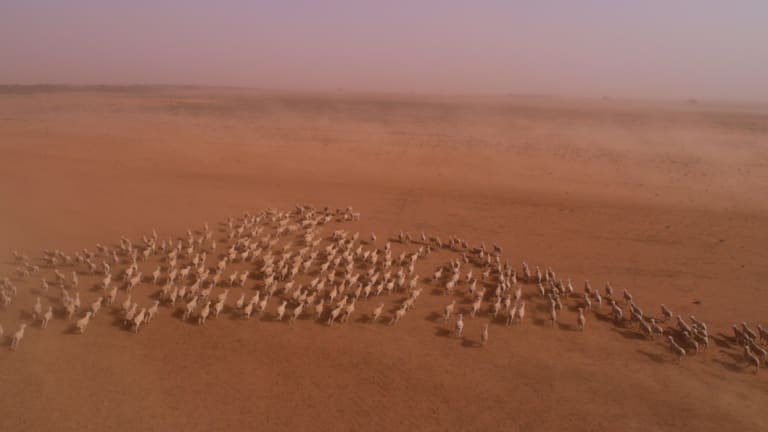
Drought contains, within those seven letters, a world of pain and heartache and grief for farming communities and the regional towns and cities that depend on them.

Dust storms sweep farms near Balranald in south west NSW as drought impacts the region.
Photo: Nick MoirFor the farmers, there is the grief of seeing their animals die, of seeing the rivers and creeks sink into their beds and disappear, the pain of brutal economics that sees money pouring always outwards. The desperate scrabble to keep stock on their feet, up early in the morning to distribute what feed remains; the glances to the sky in search of clouds, then dragging their gaze back to the harshness of dust under their feet. The watching of the radar when rain is forecast, only to see that hope evaporate like the water in their dams. A drought in winter is particularly harsh - the loss of pregnant and feeding ewes and the lambs, and the calves and cows - new life being created only to die in the dust.
Loading
But there is a universal heartache felt across the countryside - because the country itself is dying in this drought.
The grasses were the first to go, turning brown and crackly underfoot, then shrivelling and blowing away on the breeze. As the months rolled on, the young trees started to turn brown - at first just a few leaves, nothing surprising, then gradually the saplings died, skeletons of pale grey with crackling brown leaves hanging like old Christmas decorations. Then the older trees on the ridgelines started - leaves, then a branch or two, then, almost overnight, none of the grey-green leaves were left. And these were native trees, gums, hardy and drought-resistant, which have shaken off previous hot, dry seasons with a toss of their wind-blown branches. But not now. Now their leaves hang, dry and lifeless.









 Add Category
Add Category